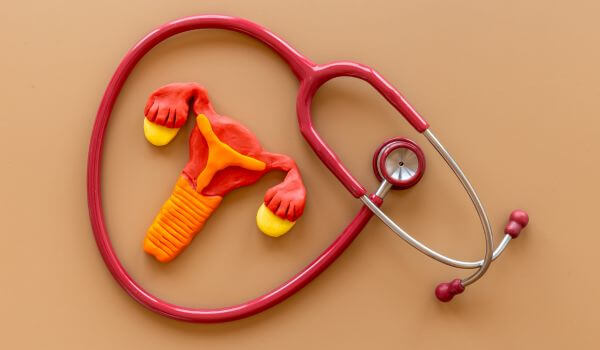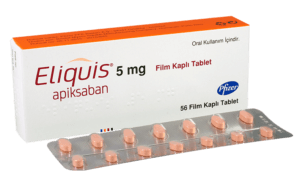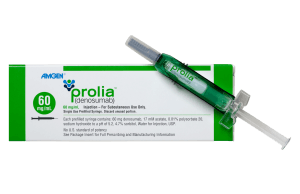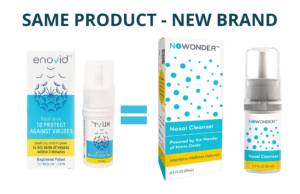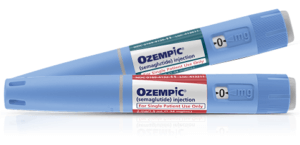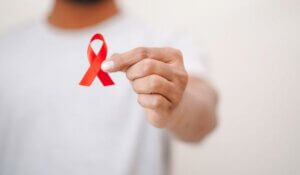
The treatment of people infected by HIV has improved dramatically since the AIDS epidemic. If diagnosis occurs early enough and treatment is started immediately, there’s a much better chance of living a long, healthy life. Today, people with HIV can work, have families, enjoy social lives, and build meaningful relationships.
HIV, or human immunodeficiency virus, is a virus that weakens the immune system over time. It attacks CD4 cells, which are essential for fighting off illnesses. Without treatment, HIV can develop into AIDS (acquired immunodeficiency syndrome) over time. When someone has AIDS, their immune system is so weak that they can’t fight off infections or prevent some types of cancer, meaning that they are more susceptible to developing diseases and being infected by common viruses and less able to fight these owing to their reduced immunity.
What are the symptoms of HIV infection?
When someone is first infected with HIV, they might develop what is known as seroconversion illness. The symptoms can include:
- Fever
- Feeling very tired
- Headache
- Sore muscles and joints
- Sore throat
- Swollen lymph nodes in the neck, underarms, or groin
- Skin rash
Seroconversion illness usually happens two to four weeks after getting infected with HIV. The symptoms can feel like the flu and might be mild, or people might not notice any symptoms.
For females, the first signs of HIV can sometimes be related to gynecological health, such as:
- Yeast infections (thrush)
- Bacterial infections (bacterial vaginosis)
- Pelvic inflammatory disease (PID)
- Genital sores
- Changes in their menstrual cycle
Infection by HIV can be hard to diagnose because symptoms are often quite mild. After the initial seroconversion illness, most people infected by HIV don’t show any other signs, but the virus stays in their body and can still be passed to others.
Without treatment, HIV can cause general symptoms over time, including:
- Lack of appetite
- Diarrhea
- Losing weight
- Fever
- Feeling very tired or low on energy
Why do some people with HIV infection develop AIDS?
Not everyone who is infected by HIV will develop AIDS. Of people who do not get treated for HIV infection, about one-half develop full-blown AIDS within ten years. Women tend to develop AIDS faster than men. These days, if HIV medicines are taken early and the right way, the risk of developing AIDS is very low. The medicine keeps the virus levels in the blood (the “viral load”) low and protects the immune system.
What are some illnesses that are of high risk with AIDS?
AIDS causes a weak immune system, making it harder for the body to fight off illnesses. This puts people at higher risk for:
- More serious infections due to reduced immunity, like meningitis (a brain infection), tuberculosis (TB), CMV, severe yeast infections, toxoplasmosis, bacterial pneumonia, or cryptosporidiosis (a stomach infection).
- Certain types of cancer, like Kaposi sarcoma or lymphoma.
- Neurological issues, such as memory loss or confusion.
- Kidney problems.
- Wasting syndrome, which causes extreme weight loss, often with fever or diarrhea.
- Skin infections like oral thrush or shingles.
- Women with advanced AIDS may also have a higher chance of developing cervical or uterine cancer.
How do people become infected with HIV?
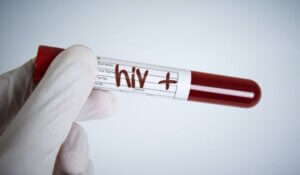
HIV can be spread through certain body fluids. These include blood, semen, rectal fluids, vaginal fluids, and breast milk. HIV cannot be spread through kissing, sharing dishes, cups, or utensils, using the same toilet, bug or animal bites, handshakes or hugs, or through saliva, tears, sweat, or urine.
HIV Risk Factors
In the early days, there was a much higher rate of infection among men who practiced unprotected sex. Other risk factors include having unprotected sex or sharing needles with someone at risk of HIV, having unprotected sex with people from countries where HIV rates are high, injecting drugs and sharing needles, getting tattoos or piercings in another country with unclean tools, or receiving a blood transfusion in a country where the blood supply isn’t safe.
When should I get tested for HIV?
Individuals should get tested for HIV if they feel any symptoms and have recently:
- Had unprotected sex with someone whose HIV status they don’t know or who has HIV with a detectable viral load.
- Had shared needles or syringes.
- Started taking or are about to start taking PrEP (pre-exposure prophylaxis) or PEP (post-exposure prophylaxis).
Finding out early can make a big difference and help manage the illness better in the long run. Ask a doctor or a sexual health clinic about getting tested for other Sexually Transmitted Diseases (STDs) at the same time.
How is HIV diagnosed?
HIV can be detected with a blood test, rapid test, or a self-test at home.
Blood Tests
A doctor or sexual health clinic can perform a blood test for HIV. The blood will be sent to a lab, and the results will usually be sent within a week.
Rapid HIV Tests
A rapid test is another option that a health professional can use. This test checks either a small drop of blood from the finger or a bit of saliva. The results can be read in 10 to 20 minutes. Sometimes, a rapid test might not be accurate, so the doctor may decide to double-check the result with a blood test.
HIV self-testing
Self-testing for HIV works like a rapid HIV test. It is a simple finger-prick blood test that individuals can perform at home or in any comfortable setting, providing results in under 15 minutes.
If the test result is positive, it’s essential to visit a doctor for a follow-up blood test to confirm the result.
No matter what kind of test is taken, it can take up to six weeks (or longer) after being exposed to HIV for it to show up in blood. This means someone could test negative even if they have been infected with HIV, which is called a “false negative.” Some individuals might need to take more than one test over time to know for sure if they have the virus.
While waiting for test results, it’s essential to have safe sex and use clean needles. Even if the results are negative, keeping up these habits will help protect from infections in the future.
How is an infection with HIV treated?
Infections by HIV can be treated with antiretroviral therapy (ART), which is a mixture of HIV medicines that work together to stop the virus from making more copies of itself in the body. There’s no cure or vaccine for HIV yet, but starting treatment as soon as one is diagnosed can improve health and lead to better long-term results.
If the HIV medicines are taken as prescribed, the level of HIV in the body can become so low that it becomes ineffective. This is known as an undetectable viral load. It means that it is unlikely that HIV will progress to AIDS, and one can live a long, healthy life. Also, if an individual has an undetectable viral load for more than six months, they cannot pass HIV to anyone else.
Doctors treating patients with HIV have different antiretroviral treatments to choose from and decide which one is best for the individual. They will examine how far the condition has progressed, how the body reacts to the treatment, and the patient’s overall health.
Each type of treatment used in ART has a different way of keeping HIV from making more copies of itself or from infecting cells. There can be many other brand names of the same type of ART drug.
Types of HIV medicines include:
- Nucleoside reverse transcriptase inhibitors (NRTIs).
- Non-nucleoside reverse transcriptase inhibitors (NNRTIs).
- Protease inhibitors (PIs).
- Fusion inhibitors.
- CCR5 antagonists.
- Integrase strand transfer inhibitors (INSTIs).
- Attachment inhibitors.
- Post-attachment inhibitors.
- Pharmacokinetic enhancers.
A few examples of ART drugs are:
- Biktarvy, which brings together three key classes of HIV treatment: an integrase strand transfer inhibitor (INSTI), a nucleoside reverse transcriptase inhibitor (NRTI), and a nucleotide reverse transcriptase inhibitor (NtRTI).
- Trizivir, which incorporates three NRTI medications (lamivudine, zidovudine, and abacavir),
- Ziagen, which provides abacavir, a type of NRTI, is particularly beneficial as it can also be used during childbirth to prevent the mother from transmitting HIV to her baby.
Can medications prevent AIDS?
HIV medicines are available to reduce the risk of AIDS developing for those who are exposed or at high risk. These include pre-exposure prophylaxis (PrEP) for prevention before exposure and post-exposure prophylaxis (PEP) for use after potential exposure.
Pre-exposure Prophylaxis
PrEP (pre-exposure prophylaxis) is a pill that helps prevent infection by HIV for people at high risk of getting it. It works specifically to stop HIV infection but doesn’t protect against other STDs.
There are different ways to take PrEP based on your needs. You can take it daily, only when needed, or at certain times. A PrEP pill such as Truvada is generally taken daily, but it’s important to discuss personal situations with a doctor to find the most suitable PrEP plan.
Post-exposure Prophylaxis
Post-exposure prophylaxis (PEP) treatment such as Viread helps prevent HIV infection after someone has been exposed to the virus. To work best, PEP must be started as soon as possible and no more than 72 hours (3 days) after exposure. It’s necessary to to take the medicine every day for 4 weeks. Doctors can prescribe PEP, or it may be obtained from a sexual health clinic or a hospital emergency room.
Coming to terms with being infected by HIV
Even with all the progress in treating AIDS, social stigma is still a problem. A new diagnosis can bring feelings of fear and uncertainty, and people might worry about how others will react. If you’re unsure about getting tested, starting treatment, or what to do next, you can talk to a local organization that focuses on HIV support. Always remember—you deserve care, support, and good healthcare.
FAQs
What’s the difference between HIV and AIDS?
HIV and AIDS are connected, but they’re not the same thing. HIV is a virus that attacks the immune system, making it weaker. AIDS is a condition that can happen if HIV isn’t treated and an individual’s immune system becomes very weak. People can only get AIDS if they already have HIV. With proper treatment, many people with HIV never develop AIDS. But without treatment, most people with HIV will eventually get AIDS.
Can I get pregnant if I have been infected by HIV?
Yes, pregnancy can occur in HIV-positive individuals safely with the help of a doctor. HIV can be passed to a partner during unprotected sex or to a baby during pregnancy, childbirth, or breastfeeding. Taking ART medications can lower the chance of this happening, especially if there is an undetectable viral load. A doctor might also suggest using formula instead of breastfeeding to protect the baby.
Is seroconversion illness unique to HIV?
No. It is a sign that the immune system is reacting to a virus, not always HIV. Seroconversion starts when the body produces antibodies to a virus. Symptoms typically appear within a month of infection and can clear within two to three weeks. However, seroconversion illness can be severe enough to require hospitalization. After the symptoms have passed, most people feel OK and don’t experience any symptoms for several years. However, the virus is still active and can damage the immune system. Over time, the risk of developing infections increases.


